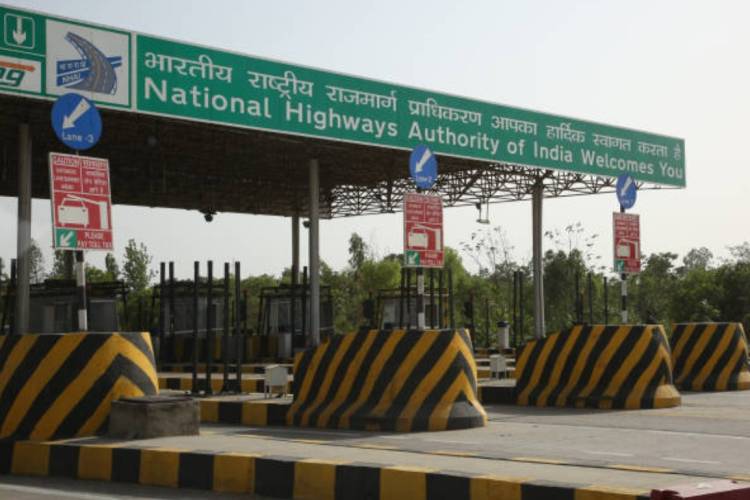Highway monetisation India: The national highways are not just vital arteries of connectivity—they are also critical revenue-generating assets for the government. Reviving this monetisation channel has become a top priority for the ministry of road transport and highways, as it looks to mobilise capital for new infrastructure projects.
After a two-month pause, the government is preparing to resume monetisation through the toll-operate-transfer (TOT) model, but with significant tweaks aimed at making the mechanism more attractive to private investors. The new plan involves breaking down highway assets into smaller bundles—each worth up to Rs 1,500 crore—to encourage broader participation and intensify bidding competition. The goal: boost proceeds for the National Highways Authority of India (NHAI) and enhance overall investor appetite.
READ | Tesla will struggle to crack India’s price-conscious EV market
Rethinking TOT: From pause to pivot
The TOT programme was temporarily shelved earlier this year amid growing concerns within the government about the model’s design and distribution of benefits. Under the existing format, NHAI auctions operational highways to private concessionaires who collect tolls, operate and maintain the roads, and profit from the surplus toll revenue. The model has been effective in attracting long-term capital from both Indian and global investors, including infrastructure funds and pension managers.
However, a closer review exposed troubling inefficiencies. While private players reaped healthy internal rates of return, the government was often left with only modest upfront payments. Moreover, concerns emerged about the quality of maintenance and the financial risks being shifted onto the Indian banking system.
Highways minister Nitin Gadkari and road secretary V Umashankar raised red flags and called for a comprehensive audit of all TOT awards. They highlighted a key departure from the original intent: investors were supposed to bring their own capital, but many turned to domestic banks for funding. This not only diluted the risk-sharing structure of the model but also raised systemic concerns for the banking sector.
High returns, low accountability
Officials observed that many concessionaires were delivering sub-par road maintenance, especially after aggressively bidding for TOT bundles. The practice of underinvesting in periodic upgrades, mandated every five years, posed potential risks to road safety and infrastructure durability. The government was effectively subsidising high private returns while bearing the long-term fallout of deteriorating assets.
The imbalance prompted the ministry to hit pause and reassess its approach, including a comparative analysis of the TOT model against Infrastructure Investment Trusts (Invits)—the other major tool in the government’s road monetisation arsenal.
Highway monetisation: The case for Invits
Unlike TOTs, Invits offer pooled investment vehicles that manage infrastructure assets and return stable dividends to investors. Risk is more evenly distributed, and the government retains a greater degree of control over asset management and upkeep. These advantages have led some in the ministry to consider gradually pivoting towards Invits to address the shortcomings in the TOT model.
Still, TOTs are too important to abandon entirely. They currently account for nearly 38% of the ministry’s asset monetisation pipeline, the highest share among all infrastructure departments. The model’s appeal remains strong among private players—as seen in the recent bidding for TOT Bundle 15, where the Adani Group reportedly emerged as the highest bidder.
Striking a balance: A new TOT blueprint
The ministry is now exploring a middle path. One proposal on the table involves awarding five-year toll collection rights instead of the current long-term concessions. The idea is to encourage better upkeep by keeping operators on a shorter leash. However, this clashes with private investors’ preference for longer time horizons that align with their return expectations—raising fears that participation may drop if contracts become too short-term.
To restore balance and sustainability in the TOT framework, several measures are being considered. First, the revenue-sharing mechanism may be revised to ensure a more equitable distribution of toll proceeds between the government and concessionaires. Analysts suggest capping IRRs or linking payouts to performance benchmarks related to maintenance and safety.
Second, there’s growing consensus on the need for tighter scrutiny of financing arrangements. Concessionaires should ideally bring equity capital to the table rather than relying heavily on debt from Indian banks. Strengthening maintenance clauses in contracts, with penalties for violations, would help enforce accountability.
The NHAI’s underwhelming monetisation figures in FY24—Rs 6,661 crore against a target of Rs 15,000 crore—have added urgency to the revival. The ministry has set an ambitious target of Rs 3.5 lakh crore in road asset monetisation by 2030, and course correction in the TOT programme is essential if that goal is to be met.
India’s infrastructure ambitions hinge on unlocking private capital without compromising public interest. With TOTs, the challenge lies in getting the formula right: one that protects state interests, ensures long-term maintenance, and still offers viable returns for private players. If recalibrated thoughtfully, TOTs could continue to play a pivotal role in bridging India’s infrastructure financing gap—while restoring a measure of balance that has been missing so far.

